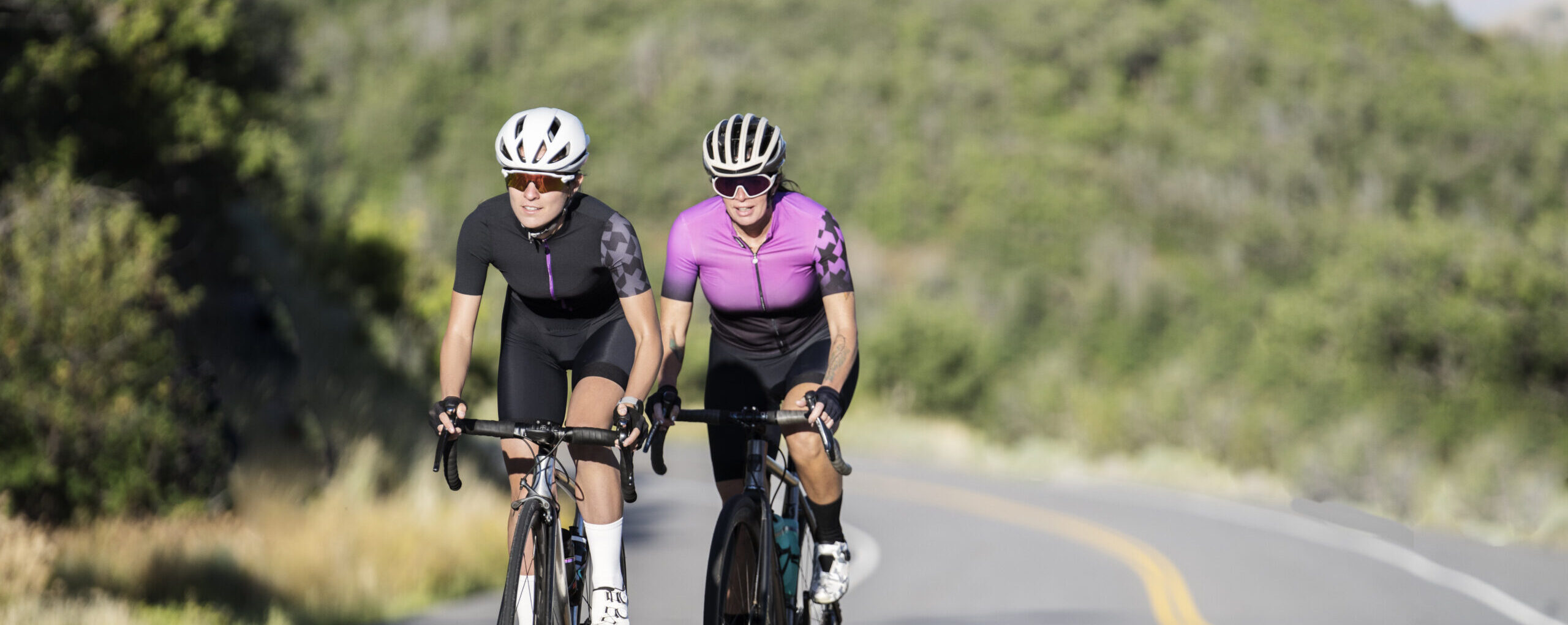For cyclists over 50, unlocking new levels of fitness isn’t just possible — it’s increasingly practical with modern tools and smarter strategies. Whether you’re a weekend warrior or a dedicated competitor, VO2 max training tailored for mature riders offers transformative benefits. Enhanced with insights from CTS and endurance coach Paul Warloski, this comprehensive guide shows how older athletes can not only maintain but substantially improve performance, vitality, and health.
Understanding VO2 Max and Its Importance
VO2 max is the maximum volume of oxygen your body can utilize during intense exercise. It is a central measure of aerobic endurance and cardiovascular capacity. As you age, VO2 max naturally declines—by approximately 10% each decade after your 30s—but this decline is neither fixed nor unchangeable. Through consistent, structured training, athletes well into their 60s and 70s can regain substantial portions of this lost capacity. According to the CTS research, a properly managed training regimen can improve VO2 max by 15–20%, enhancing both performance and long-term health outcomes.
Structuring Training for Mature Athletes
Paul Warloski stresses that athletes over 50 must adopt a training model that balances effort with recovery. A smart weekly layout might include:
- 1–2 high-intensity days: VO2 max intervals, short Zwift races, or hill sprints.
- 2–3 Zone 2 aerobic rides: steady-state, long-duration rides to build mitochondrial density and fat metabolism.
- 1–2 rest or active recovery days: easy rides, stretching, or walks.
- 1–2 strength sessions: focusing on major movement patterns—push, pull, squat, hinge, and carry.
This weekly rhythm allows for high-quality training stimulus while respecting the slower recovery rate common among older athletes.
High-Intensity Intervals: The VO2 Max Engine
High-intensity interval training (HIIT) remains one of the most effective tools for boosting VO2 max. Examples include 3–6 minute intervals at 106–120% of FTP with 1:1 rest, or a slightly more advanced version using 2-minute intervals at 121% for power and explosiveness. Rest between sessions becomes increasingly important with age; schedule at least 2–3 recovery days before another hard effort. Recovery isn’t laziness—it’s where adaptation occurs.
Improving Fractional Utilization of VO2 Max
Improving fractional utilization means increasing how much of your VO2 max you can sustain. Most endurance athletes operate with FTPs at about 75–85% of VO2 max. To raise this bar, use sustained efforts like:
- 10–30 minute intervals at 91–95% of FTP
- Tempo rides at 76–90% FTP for durations of 45–120 minutes
- Sweet spot intervals (88–94%) which balance volume and intensity
These sessions improve lactate threshold, muscular endurance, and the psychological capacity to hold uncomfortable efforts for longer periods.
Strength Training: The Foundation for Longevity
Strength training is non-negotiable for aging cyclists. Sarcopenia, the age-related loss of muscle, begins around age 30 and accelerates over time. Counteract this with resistance exercises that emphasize multi-joint movements. Use free weights or machines to perform exercises like deadlifts, squats, overhead presses, and rows. Select weights that you can lift for 8–10 reps with a two-rep reserve.
Two sessions per week are enough to maintain or even gain muscle mass. Coupled with adequate protein, this slows aging, preserves bone density, and improves cycling economy. The stronger your legs and core, the more power you can produce with less strain.
Nutrition: Fueling Performance and Recovery
Older athletes require more protein to stimulate muscle protein synthesis. Aim for 1.8g/kg/day, split into even meals and post-workout shakes. Include a 30–40g protein serving before bed to support overnight recovery. Combine this with nutrient-dense carbs to replenish glycogen, and healthy fats to support hormone production.
Hydration is also vital. Dehydration reduces performance and recovery quality. Drink water throughout the day and consider electrolyte supplements during longer rides.
Online Training Tools and Platforms
Platforms like Zwift and Rouvy bring structure, entertainment, and motivation. With downloadable plans from TrainingPeaks or Athletica, you can personalize your progress. Online rides offer consistency through all seasons and social reinforcement via group rides or races.
Warloski also recommends monitoring HRV (heart rate variability) using apps like HRV4Training. It provides daily feedback on stress and readiness, helping you make informed training decisions. Integrating data such as heart rate, power output, and cadence allows for fine-tuning every session.
Stretch, Sleep, and Stress: Recovery Trifecta
Recovery isn’t just about doing nothing—it’s active, intentional, and vital. Yoga, dynamic stretching, and foam rolling should be regular parts of your week. A pre-ride warmup and post-ride cooldown also reduce injury risk and enhance performance.
Sleep is your superpower. Aim for 7–9 hours nightly in a cool, dark, quiet room. Consistent sleep boosts testosterone, growth hormone, and mood—all essential for training adaptation. Stress management techniques like meditation, journaling, or nature walks reduce cortisol and improve your overall wellbeing.
TTE: Enduring Longer, Not Just Harder
As max sprint power declines with age, time to exhaustion (TTE) becomes a critical metric. Improving how long you can ride near FTP can massively benefit sportives, gran fondos, or hilly group rides. Try a mix of:
- Extensive intervals: 5–8 x 5 mins at 106% FTP
- Intensive FTP intervals: 3–4 x 10 mins at 100–105%
- Tempo builds: 60–90 mins at 85–90% FTP
These build both the engine and the fuel tank, giving you stamina for long efforts without bonking.
The Psychology of Enduring Performance
Mindset matters more with age. Motivation, purpose, and community all influence consistency. Use visualization techniques to rehearse race scenarios. Keep a training log—not just for metrics, but for emotional notes. Celebrate non-scale victories like improved endurance, better sleep, or sustained energy.
Warloski suggests setting season goals beyond performance: “Ride 3x per week for a year” or “Complete a 100km group ride.” These goals promote joy, not just results.
Final Thoughts: Defying Age Through Intentional Action
Aging doesn’t limit your potential—it refines your priorities. By combining VO2 max training, strength, balanced nutrition, digital tools, and recovery strategies, mature cyclists can achieve new heights of fitness. With intention, discipline, and support, you’re not just training—you’re thriving.
Disclaimer: Always consult with a healthcare professional before starting any new intense exercise regimen, especially if you have pre-existing health conditions.




At 58, I was skeptical about high-intensity training – always thought it was for younger riders. Started incorporating these hill repeats 6 months ago and my FTP has increased by 22 watts! More importantly, I’m keeping up with the Saturday group ride again, which has guys 20+ years younger than me. The recovery advice is spot on too – quality sleep makes all the difference.
As a sports physiologist who works with masters athletes, I fully endorse this approach. The research is clear that VO2 max can be improved at any age with appropriate training. One note of caution – recovery becomes increasingly important as we age. For my 50+ athletes, I recommend at least 48 hours between high-intensity sessions, and regular HRV monitoring to ensure adequate recovery. Great article that busts the myth that intensity is only for the young!
I’m turning 45 next month and just started implementing these interval workouts. It’s only been 3 weeks but I’m already seeing improvements in my ability to sustain higher power outputs. The mental preparation section really resonated with me – I was intimidated by HIIT at first, but setting realistic expectations has been key. Would love to see a follow-up article on nutrition strategies for mature athletes doing this type of training!
As a 62-year-old who’s been cycling for over 30 years, I can confirm these methods work. I’ve used power meter data to track my performance over the last decade, and VO2 max sessions twice weekly have prevented the typical age-related decline. My numbers at 62 are close to what they were at 52! The key, as mentioned, is proper recovery – which for me means protein immediately after hard sessions, full rest days, and massage therapy once a month. Age is just a number if you train smart!
I’m a cycling instructor who primarily works with older adults (50-75 age group). I’ve been incorporating modified versions of these intervals in my classes with amazing results. We adjust the work-to-rest ratios to 1:2 for beginners. One thing I’d add – heart rate recovery is a fantastic metric for mature cyclists to track. Improving recovery time between intervals is often the first noticeable adaptation, even before power increases. Thanks for highlighting that performance improvements are possible at any age!